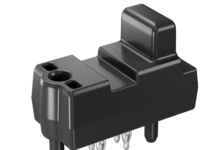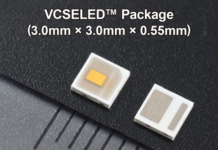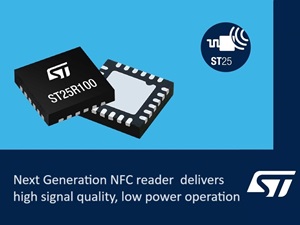
The evolution of autonomous driving technologies drives the need for advanced lighting systems that complement and support autonomous vehicle functionalities, emphasizing adaptive lighting as a crucial element. Efforts to optimize supply chains and manufacturing processes for adaptive lighting systems influence market competitiveness, driving cost-efficiency and scalability of production.
Urban development patterns and smart city initiatives influence lighting requirements, driving demand for adaptive lighting systems suited for various urban environments and road conditions. Increasing focus on the aesthetic appeal of automotive lighting contributes to demand for adaptive front lighting systems that blend safety with sleek, futuristic designs.
The global automotive adaptive front lighting Industry is estimated to flourish at a CAGR of 12.5% from 2023 to 2031. Transparency Market Research projects that the overall sales revenue for automotive adaptive front lighting is estimated to reach US$ 4.1 billion by the end of 2031.

Technology Overview
Adaptive front lighting systems utilize advanced lighting technologies and sensors to dynamically adjust the direction and intensity of headlights based on driving conditions. Traditional headlights provide a fixed beam pattern, which may not adequately illuminate the road ahead in all situations. In contrast, AFS systems can pivot the headlights in response to steering input, vehicle speed, weather conditions, and the presence of other vehicles on the road.
Key Findings of the Market Report
- Passenger vehicles lead the automotive adaptive front lighting market, driven by increasing demand for advanced safety features and technological innovations.
- LED technology leads the automotive adaptive front lighting market, offering efficient, adaptable, and widely adopted lighting solutions for vehicles.
- Europe leads the automotive adaptive front lighting market, boasting technological prowess and emphasizing vehicle safety and premium features.
Automotive Adaptive Front Lighting Market Growth Drivers & Trends
- Stringent safety standards globally propel the demand for adaptive front lighting systems, emphasizing enhanced visibility and road safety.
- Continuous innovation drives the development of adaptive LED headlights, matrix beam systems, and predictive lighting technologies.
- Increasing consumer awareness and demand for vehicles equipped with advanced safety features drive market growth.
- Growing automotive sales worldwide, particularly in emerging markets, fuel the adoption of adaptive front lighting systems in modern vehicles.
- Focus on energy-efficient lighting solutions in automobiles aligns with sustainability goals, influencing adaptive lighting system design and implementation.
Market Trends
Growth Drivers
- Regulatory Standards: Increasing emphasis on vehicle safety and visibility standards by regulatory bodies has driven the adoption of advanced lighting technologies like AFS.
- Consumer Demand: Growing awareness of safety features among consumers, coupled with the desire for enhanced driving experiences, has fueled demand for vehicles equipped with AFS.
- Technological Advancements: Continuous innovation in sensor technology, including improved detection capabilities and reduced costs, has made AFS more accessible to automakers and consumers alike.
Regional Insights
- North America: Leading market for automotive adaptive front lighting systems, driven by stringent safety regulations and high consumer adoption of advanced automotive technologies.
- Europe: Significant market due to stringent safety norms and a strong presence of luxury and premium vehicle manufacturers, which often adopt AFS as a standard feature.
Key Players
The automotive adaptive front lighting market is characterized by the presence of several key players, including:
- Hella KGaA Hueck & Co.: A leading supplier of automotive lighting solutions, offering a range of AFS systems tailored to various vehicle segments.
- Valeo S.A.: Known for its innovative lighting technologies, Valeo develops adaptive front lighting systems that integrate seamlessly with vehicle electronics and safety systems.
- Osram Licht AG: Provides advanced lighting solutions, including AFS systems that enhance vehicle safety and driver visibility.
- Koito Manufacturing Co., Ltd.: A prominent Japanese supplier of automotive lighting systems, offering AFS solutions for both OEMs and aftermarket applications.
Future Outlook
The automotive adaptive front lighting market is expected to witness continued growth, driven by:
- Advancements in LED Technology: Ongoing developments in LED technology are expected to enhance the performance and efficiency of adaptive front lighting systems.
- Integration with Autonomous Vehicles: AFS systems are likely to play a crucial role in enhancing the safety and functionality of autonomous vehicles by improving nighttime visibility and reducing glare for other road users.
- Market Expansion in Emerging Economies: Increasing vehicle penetration rates and rising safety awareness in emerging economies present significant growth opportunities for AFS manufacturers.
Conclusion
In conclusion, the automotive adaptive front lighting market is poised for substantial growth driven by technological advancements, regulatory standards, and consumer demand for enhanced vehicle safety and driving experiences. As automotive manufacturers continue to prioritize safety and innovation, AFS systems are expected to become a standard feature across a broader range of vehicle segments. Key players in the market are actively investing in research and development to enhance the performance and functionality of AFS, ensuring continued market expansion and adoption globally.
For more information visit here


















